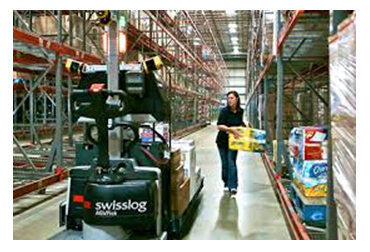Routing & Slotting Strategy
 Because travel time can account for 50% or more of total order picking time, choosing the right routing strategy becomes critical especially if some type of slotting criteria is involved. Routing and slotting strategies can each individually reduce travel distances of order pickers, but a good combination of both is even more effective. Because travel time can account for 50% or more of total order picking time, choosing the right routing strategy becomes critical especially if some type of slotting criteria is involved. Routing and slotting strategies can each individually reduce travel distances of order pickers, but a good combination of both is even more effective.
To obtain the shortest order picking route possible, you need a strategy that is capable of considering all possibilities for travelling in and between aisles.
So, this got us thinking about how companies can optimize their manual order picking route and slotting efficiency. Our research efforts uncovered an interesting simulation tool, designed specifically for this purpose, check it out:
|